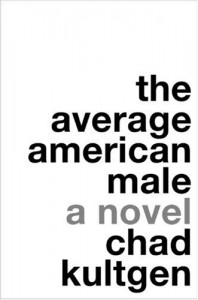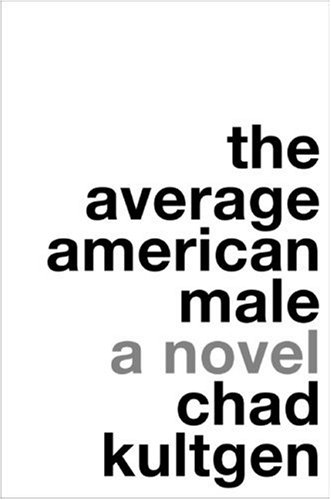By Alex Watkins (News Editor) – Email
 Everyone of post-secondary age is probably familiar with that infamous claim of mysterious scientific origin: men think about sex every few seconds. Chad Kultgen’s book, The Average American Male, takes that claim a step further. Not only are straight American men aimless video game addicts, but they are quite literally willing to sleep with 98 percent of the female population, given the right conditions. In fact, Kultgen’s protagonist is unable to identify a single woman who he could honestly place in the remaining 2 percent, regardless of age, sanity, and (presumably) cleanliness.
Everyone of post-secondary age is probably familiar with that infamous claim of mysterious scientific origin: men think about sex every few seconds. Chad Kultgen’s book, The Average American Male, takes that claim a step further. Not only are straight American men aimless video game addicts, but they are quite literally willing to sleep with 98 percent of the female population, given the right conditions. In fact, Kultgen’s protagonist is unable to identify a single woman who he could honestly place in the remaining 2 percent, regardless of age, sanity, and (presumably) cleanliness.
Female characters in the protagonist’s world are one of three things: ring-hungry girlfriends, mothers who enable and encourage this mania, or veritable dream girls with perfect bodies and an enthusiasm for video games matched only by their voracious appetite for sex. Sadly, given enough time, the dream girls eventually become nothing more than baby-hungry husband-seekers as well. Kultgen’s men are either: married and thus neutered; gay and thus aggressively, constantly horny and oversexed; or straight and thus aggressively, constantly horny (but never sexed enough).
The lives of these people are inevitably bleak and depressing. Straight men can never be satisfied in their search for the perfect partner, because all women eventually share the same failings – lack of interest in sex, too much (unshared) interest in vapid conversations and activities, and the desire to drag a man to the altar whether he damn well likes it or not. Straight women will conversely never enjoy a mutually satisfying relationship because they will always fail to meet expectations – their spouses will always secretly be wishing they didn’t have such a fat ass, groaning about the stupid things that they do and say, and carefully calculating which affectionate words and actions will be most likely to get them laid.
Kultgen’s characters are vague, and the protagonist is never named or given a concrete occupation – after all, he is supposed to be the everyman. But in their superficiality and extreme representations of behavior, they merely seem cartoonish. In this sense, the male gender is discredited as much as the female: the average American male (according to Kultgen) thinks almost exclusively of sleeping with the women he sees on the street, masturbation, memories of past relationships (usually involving sex) and the stupidity and emptiness of the women around him. All characters are static, and the only real change experienced by the protagonist is his realization that since all women eventually end up the same, the one he is with is as good as any.
Although Kultgen’s offering is generally miserable and depressing – not to mention brutally misogynistic – it also seems like the inevitable male response to the chick-lit and Cosmo culture that – whether or not we want to admit it – does appeal to female vacuity. For every magazine article about how to succeed in the workplace there are ten providing insight into celebrity relationships, fashion trends, and how to “cheat proof” a boyfriend – all under the guise of empowered womanhood. The very media that North American women consume so widely thus does tend to represent them in the same manner as Kultgen does: defined most strongly in terms of appearance, desperately seeking long-term partners, and treating vaginas as bargaining tools. That said, his descriptions of airheaded women seem not so much a criticism of the culture that breeds them as an acceptance of and participation in this culture.
The Average American Male is clearly not a highbrow piece – evidenced by its simplistic tone and vocabulary, roughly sketched characters, and constant use of profanity and soft-core pornographic images. But even so, it should still have something valid to say. Kultgen references Bret Easton Ellis as an influence, but emphatically states that The Average American Male is greatly inferior, and I’d have to agree. While Ellis was similarly simplistic, modern, and bleak, he fleshed out a clear picture of modern alienation and apathy in Rules of Attraction that resonated with many readers, and a nauseating but striking illustration in American Psycho of the yuppie fixation on consumer goods and the way it numbs regard for one’s fellow man/woman.
The fact that Kultgen misses the mark in crafting striking, telling, and accurate depictions of American men and women and the factors that keep them eternally dissatisfied reduces the book to mere entertainment and shock value, in the vein of Tucker Max and Maddox. And because The Average American Male has so little to say, it seems almost unfair to approach it in a serious, literary fashion.
Even the shock value becomes a bit tired. Blatant misogyny aside, several parts of the book were genuinely funny, often because of the bluntness of the protagonist and the improbability of the situations he finds himself in. But the tone of the book and the constant account of the protagonist’s sexual exploits, fantasies, and frustrations become repetitive, and – surprisingly – almost boring. One soon becomes used to the tone of the author and the work loses its novelty, even though it is short enough to easily digest in a single sitting. Overall, there is very little to recommend The Average American Male by, apart from sheer politically incorrect entertainment value and its ability to spark some pretty heated debates about the accuracy of its content.


